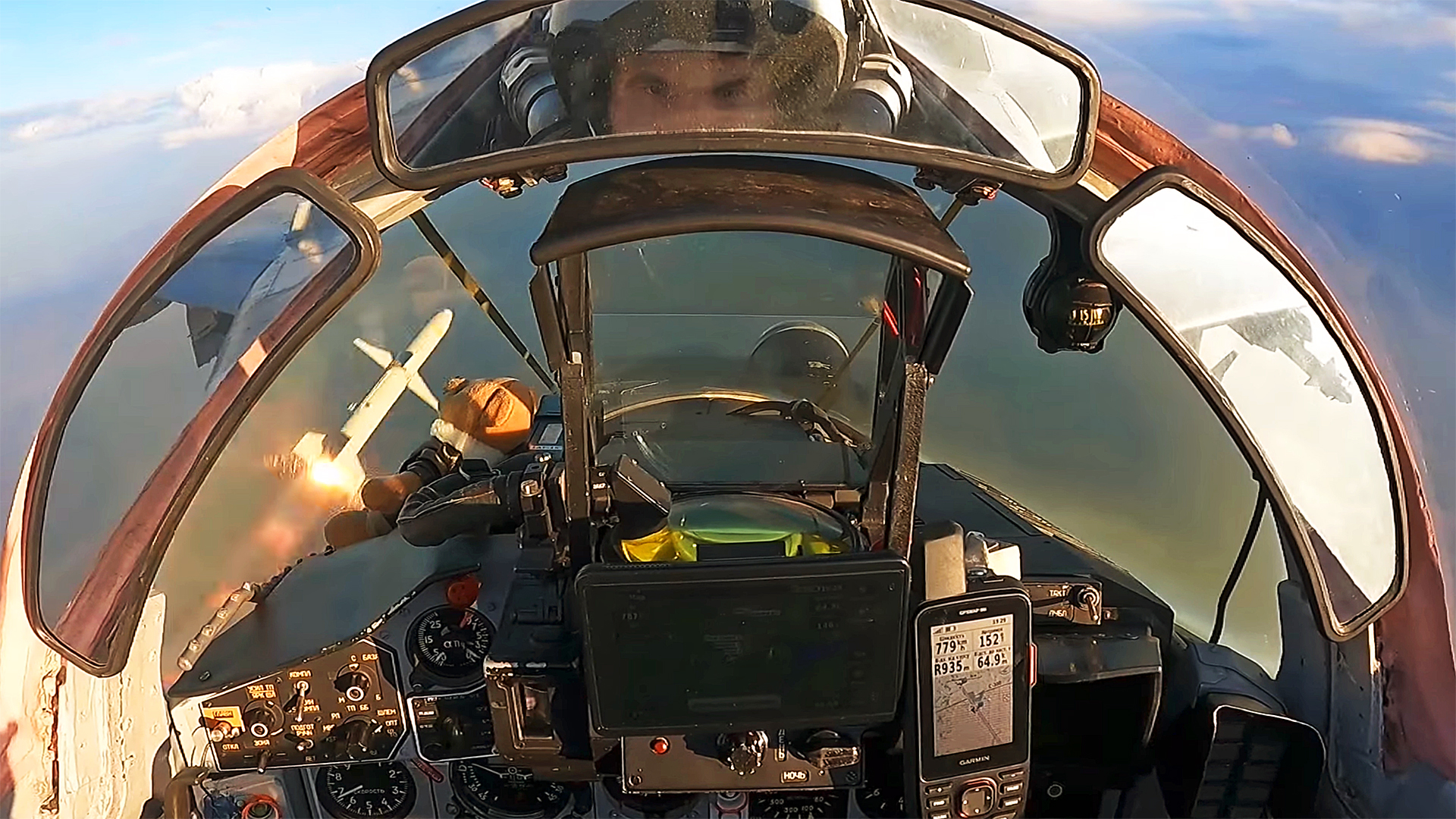The Ukrainian Air Force has, for the first time, published a video showing its MiG-29 Fulcrum jet fighters carrying and firing AGM-88 High-speed Anti-Radiation Missiles, or HARMs, demonstrating a recently introduced suppression and destruction of enemy air defense capability, also referred to collectively as SEAD/DEAD.
While the existence of HARMs in Ukraine had become clear earlier this month, and more evidence subsequently emerged online, it wasn’t until August 19 that U.S. officials confirmed the transfer of these weapons and that they were being used by “MiG aircraft.” Days later the obvious was disclosed — Ukraine’s MiG-29s have received the capability. Now, we have the chance to see them in action, and the footage, overall, doesn’t disappoint.

The video, published today on various social media channels by the Ukrainian Air Force, provides a very interesting insight into the operations of the country’s MiG-29 fleet, which consists mainly of non-deeply upgraded Soviet-era Fulcrum-C jets. Most importantly, the footage shows HARM launches, including two examples of pairs of HARMs being launched from medium altitude.
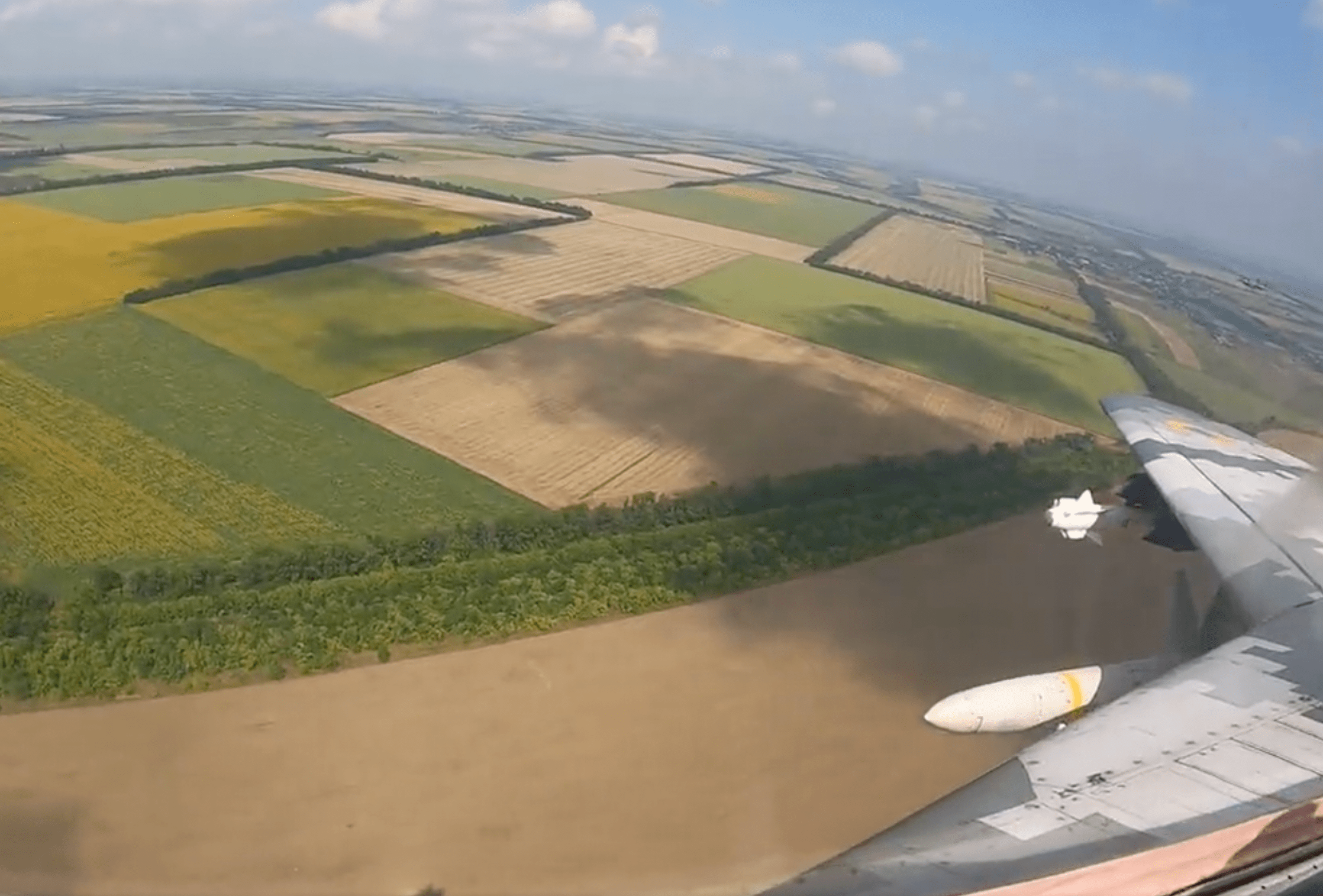
Anti-radiation missiles like the AGM-88 are primarily designed to home in on enemy signal emitters, especially air defense radars, including those directly associated with surface-to-air missile systems, and neutralize them. Since early on in the conflict, the Ukrainian Air Force has made calls for a SEAD/DEAD capability of this kind, to counter the threat of Russia’s extensive surface-to-air missiles. Prior to the arrival of the HARM, Ukraine had only very limited access to anti-radiation missiles, in the form of obsolescent Soviet-era weapons for its fleet of Su-24 Fencer strike aircraft.
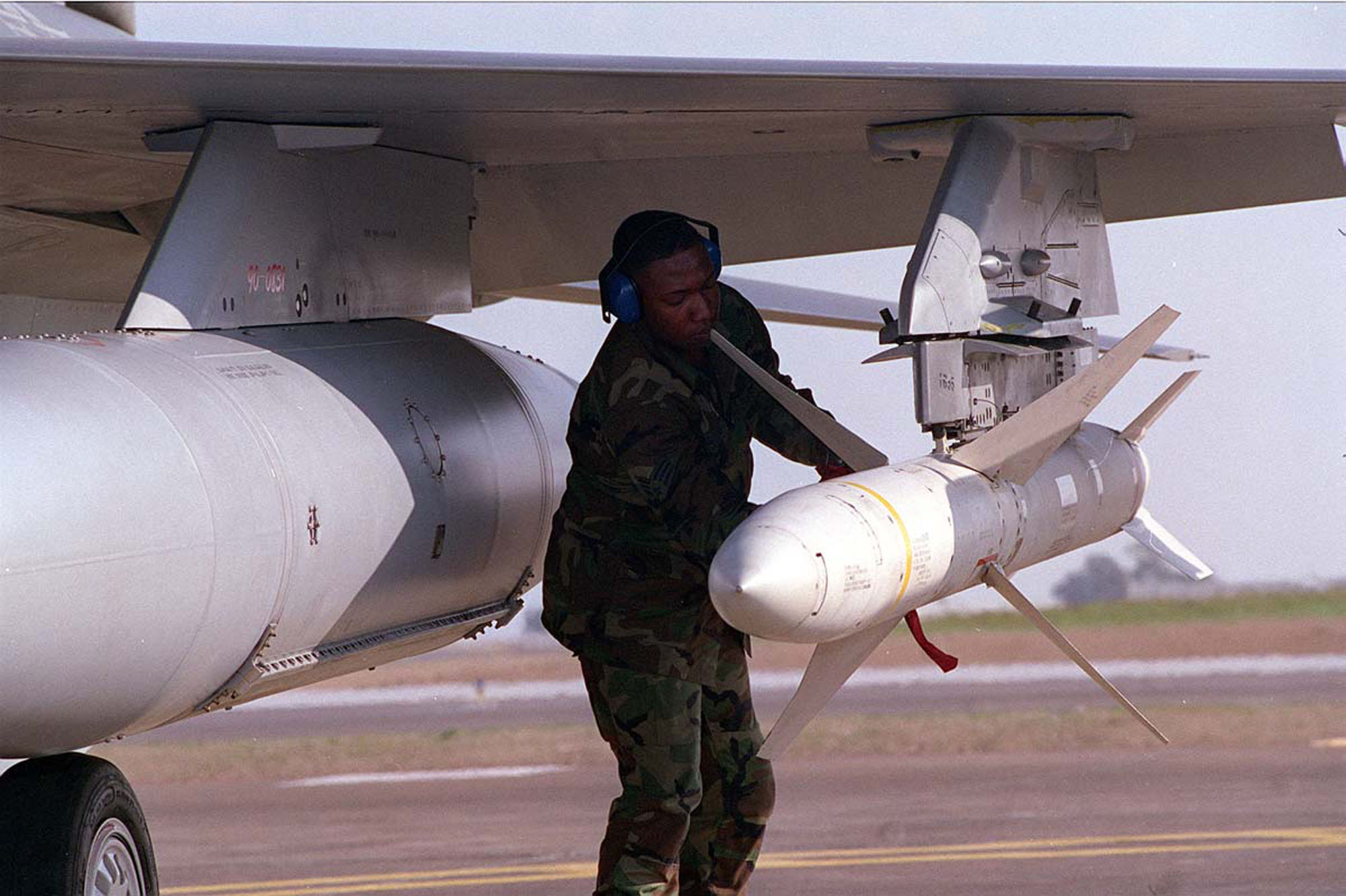
Also in the new video are more familiar combat air patrols, with MiG-29s armed with their usual radar-guided R-27R (AA-10 Alamo) and heat-seeking R-73 (AA-11 Archer) air-to-air missiles (AAMs). Much of the flying is conducted at the extremely low levels that have become something of a trademark for Ukrainian pilots, even long before the invasion began.
Ukrainian Air Force MiG-29s flying at low level at the very beginning of the conflict:

Also included in the video is the rarely seen use of the MiG-29’s 30mm GSh-301 cannon for air-to-ground strafing. At one point, as the vibration from the gun rattles through the cockpit, the GPS device that’s been added to the cockpit instrument panel can be seen falling off.

In one sequence, a MiG-29 can be seen firing a pair of unguided air-to-ground rockets, as well. These are old S-24 types, which are 240mm (9.45-inch) rockets that were first introduced by the Soviet Union in the early 1960s.
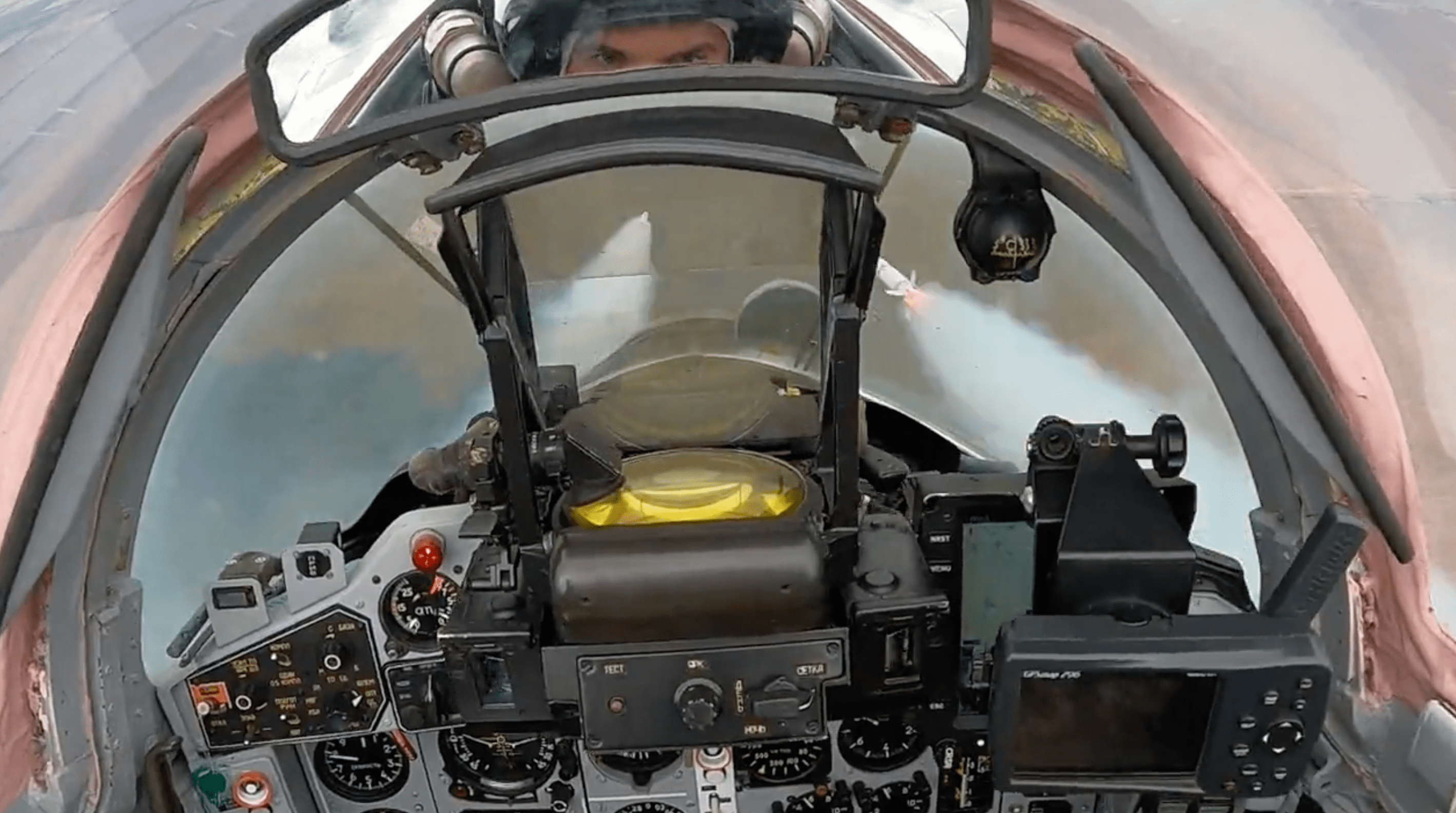
A commercially available handheld Garmin 66 series device added to the cockpit is something that’s already familiar from operations by Russian tactical aircraft, for some years now, and provides the pilot with another accurate navigation aid.
Otherwise, the cockpit of some of the jets is fitted with another digital device, apparently a Garmin 660 with a larger touchscreen display, to provide additional navigation cues. In particular, it appears to be used to improve gunnery accuracy when ground strafing and using HARM.
Both these kinds of devices could have been provided to the Ukrainian Air Force in the form of charity donations, something that is also happening on the Russian side, too.

As has been pointed out, the position of the central Garmin device appears to obstruct the existing chaff/flare counter and, to a lesser degree, two other flight instruments. Clearly, the device can either be removed quickly if required or is judged important enough to warrant losing some of this other information while fitted.
While the cockpit has undergone some improvements, they are of a fairly improvised nature. There’s no evidence that aircraft seen in the video have been upgraded to the more modern MiG-29MU1 standard, let alone the more advanced MiG-29MU2, only one example of which is thought to exist.
All in all, it’s still not possible, from this evidence, to determine exactly how the Ukrainian Air Force is employing its HARMs, or which particular model is involved. They are clearly being mounted on the inner underwing pylons, which usually carry the R-27R. In the past, The War Zone has looked at the various different options for employing the HARM from a MiG-29, especially one that’s had little to no modifications for the role.
Essentially, this seems like a fairly straightforward conversion, which would suggest that the HARMs are being fired in the so-called Pre-Briefed mode, in which the missile would be programmed to fly to the area of a specific threat, or potential threat, while the aircraft is still on the ground. This would not require any major data interface between the aircraft and missile, beyond adapted weapons pylons, with the pilot navigating to a predetermined area, likely using the add-on GPS devices.
The missile would then be launched ‘blind,’ typically at a longer range, and with the MiG-29 flying at high speed. In this way, a lofted trajectory would be imparted to maximize the missile’s flight time, with the aim of acquiring a target during its flight.
That could also explain the multiple missile launches, as a way of putting up a kind of protective, but very temporary, umbrella around a formation of friendly aircraft flying into danger. Nevertheless, that is an expensive way of suppressing air defenses and would quickly use up missile stocks. On the other hand, this could be a sign that Ukraine has received significant numbers of HARMs already. U.S. defense officials have not revealed how many AGM-88s have been delivered to Ukraine, only that a second tranche was approved once the feasibility of the integration on the MiG-29 had been proven. The double firing could also be used against areas — or even two somewhat separated areas — where there is a dense collection of highly active enemy air defense systems.
It might be the case that Ukraine is being supplied with older HARMs that had been removed from service or missiles that are being assembled from older leftover components. We know, for instance, that Raytheon regularly takes back U.S. and allied HARMs and converts them to new models by swapping sections and upgrading other parts. Potentially, there could be a ready supply of parts from AGM-88B/C variants, for example, that could be assembled into later-standard models.
The War Zone spoke to Ukrainian Air Force MiG-29 pilot “Juice” about the HARM, and he described it as “the most advanced weapon for our aviation and extremely effective.” However, he also noted that “without platforms for AIM-120 [active radar-guided air-to-air missiles], other smart air-to-ground munitions and advanced sensors, it covers a very small percentage of our missions.”
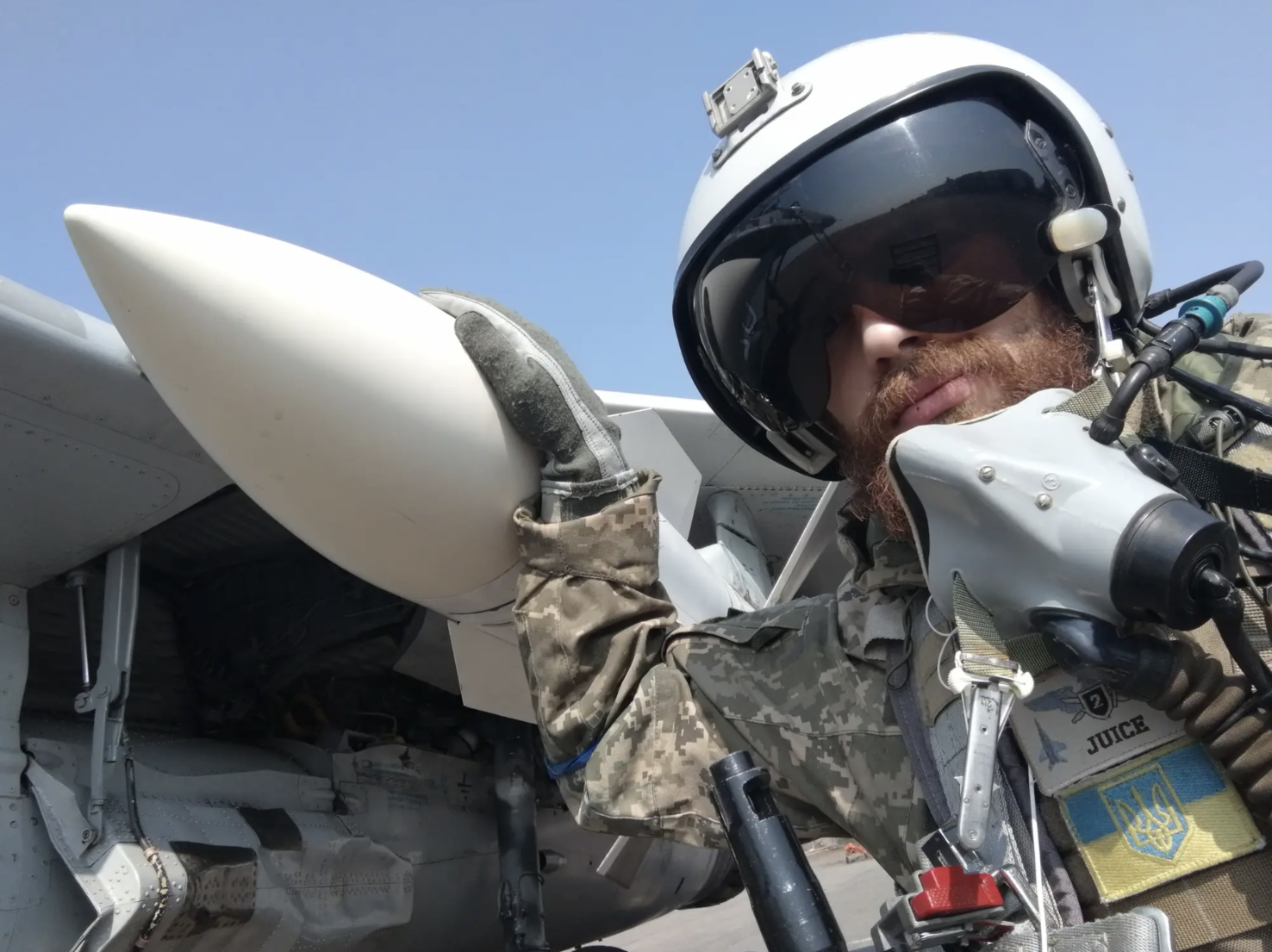
Finally, it’s worth noting that the video is dedicated to the memory of “Major Yevhen Lysenko … who heroically died in an aerial fight against the Russian invaders on March 9.” While the Ukrainian Air Force has surprised many with its survival against a numerically and technologically superior enemy, it’s clear that, since the beginning of the conflict, its inventory has suffered serious losses. So far, at least 11 MiG-29s have been confirmed as destroyed, based on open-source data, from a reported total fleet of around 50 before the latest invasion.
With that in mind, Ukraine has made strenuous efforts to obtain additional MiG-29s, with aircraft from Bulgaria, Poland, or Slovakia all having been suggested. While the Slovakian jets are reportedly now due to be transferred, so far, however, the air force has had to make do with a supply of “thousands” of spare parts. These do seem to have allowed the Ukrainian fighter fleet to have grown in numbers, albeit modestly.
The Ukrainian Air Force and its pilots, however, are already looking beyond the MiG-29 and other Soviet-era types, with repeated calls to start the process of acquiring more modern Western fighters, like the F-16, and to begin training pilots and maintainers sooner rather than later.
While it remains to be seen what new fighter jets will eventually be provided to Ukraine, it seems clear that a SEAD/DEAD capability will be very much on the list of requirements. In the meantime, Ukrainian Air Force MiG-29 pilots appear to be getting some good practice in the employment of the HARM and the wider air defense-suppression mission.
Contact the author: thomas@thedrive.com
